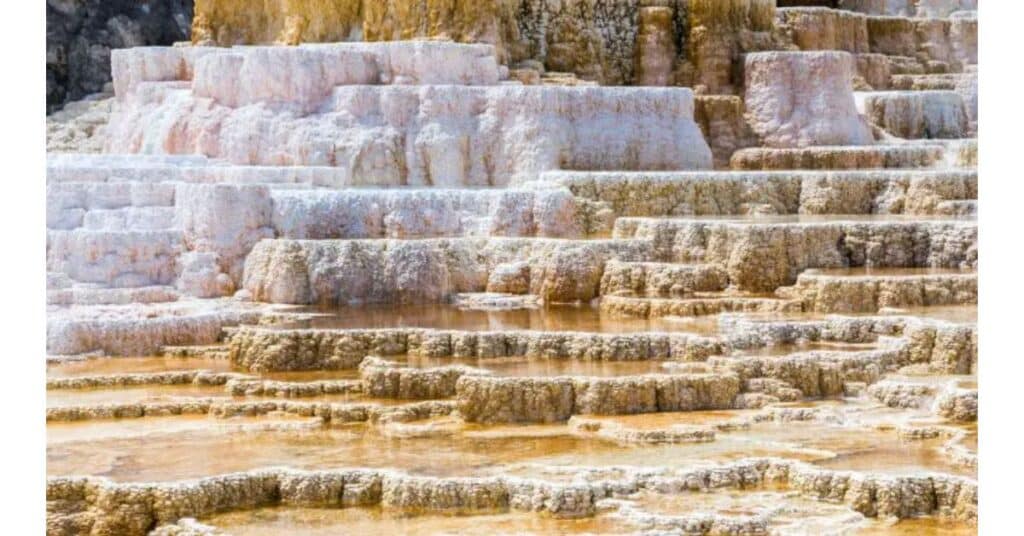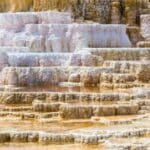Travertine, a versatile and beautiful sedimentary rock, has been used for centuries in construction and design. Known for its natural elegance and durability, it originates from calcium carbonate deposits, typically found near mineral springs or hot springs. In the United States, one company leads the production of travertine, standing out as the largest stream producer. This article dives deep into their production process, environmental practices, and the significance of travertine in modern applications.
What Is Travertine?
Travertine is a natural stone belonging to the limestone family. It forms through the precipitation of calcium carbonate in mineral springs or caves.
Characteristics of Travertine:
- Porous texture: Gives it a unique, rustic appearance.
- Variety of colors: Ranges from white to cream, tan, and even rust hues.
- Durability: Ideal for flooring, countertops, and outdoor use.
- Common features: Often contains patterns resembling stalactites or stalagmites found in caves.
Formation Process:
- Hot springs deposit minerals over time.
- Chemical precipitation solidifies these deposits into rock.
- Caves and springs contribute to its distinct veining and patterns.
The Largest Stream Producer in the United States
The United States is home to some of the richest travertine resources, and one company leads the pack. Let’s explore what sets them apart:
Key Features:
- High production capacity: The company processes millions of tons annually.
- State-of-the-art facilities: Combines traditional methods with modern machinery.
- Focus on sustainability: Implements eco-friendly quarrying and processing methods.
Location Advantage:
- Situated near major mineral springs, ensuring consistent raw material supply.
- Proximity to markets: Reduces transportation costs and environmental impact.
Our mission is to provide premium-quality travertine while prioritizing environmental stewardship, says the company’s CEO.
The Production Process
The production of travertine involves several critical steps:
| Step | Description |
| Quarrying | Extracting travertine from sedimentary deposits in quarries near springs. |
| Cutting and Shaping | Using diamond-tipped saws to create slabs of various sizes. |
| Polishing | Enhancing the stone’s natural sheen for a premium finish. |
| Quality Control | Ensuring every piece meets strict standards for strength and aesthetics. |
Applications of Travertine
Travertine’s versatility makes it a popular choice for various uses:
In Construction:
- Flooring: Durable and slip-resistant.
- Wall cladding: Adds elegance to interiors and exteriors.
- Countertops: Offers a timeless appeal in kitchens and bathrooms.
Outdoor Uses:
- Patios and Pool Decks: Withstands weathering while remaining cool to the touch.
- Garden Paths: Blends seamlessly with natural landscapes.
Environmental Impact and Sustainability Practices
Producing travertine has environmental challenges, but the industry is making strides in sustainability. The largest U.S. producer follows these eco-friendly practices:
- Water recycling: Reuses water in the cutting and polishing process.
- Reduced carbon footprint: Adopts energy-efficient machinery and transportation.
- Land rehabilitation: Restores quarry sites after extraction.
These efforts demonstrate the company’s commitment to balancing production with environmental responsibility.
Why Travertine Remains in Demand
Travertine enduring popularity can be attributed to:
- Timeless aesthetic appeal: Enhances both modern and traditional designs.
- Durability: Resists wear and tear, ensuring long-lasting installations.
- Eco-friendliness: A natural and recyclable material.
FAQs
Where Is Travertine Most Commonly Found?
Travertine is typically found near hot springs and mineral springs, forming in areas rich in limestone deposits.
What Country Does Travertine Come From?
Travertine originates from countries like Italy, Turkey, Iran, and the United States, with Italy being a leading source of premium travertine.
Where Is Travertine Mined?
Travertine is mined in quarries near natural springs and riverbeds. Notable quarries are in Italy, Turkey, and the western United States.
Is Travertine Stone Expensive?
Travertine is generally affordable compared to other natural stones. Its price depends on factors like quality, color, and finish, making it a popular choice for its durability and style.
Conclusion
Travertine remains a cornerstone of architectural and design innovation. The largest stream producer of travertine in the United States continues to set industry standards with its focus on quality, sustainability, and customer satisfaction. Whether you’re planning a home renovation or a large-scale construction project, travertine offers unmatched elegance and durability.
By understanding its origins, production, and applications, you can appreciate why travertine has remained a sought-after material for centuries.

Adim Smith is an experienced blogger at Match Starz, sharing in-depth insights on celebrities and athletes. With a passion for storytelling, he brings readers closer to the lives and achievements of today’s biggest stars.







